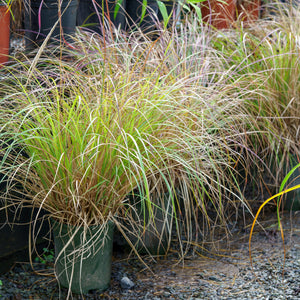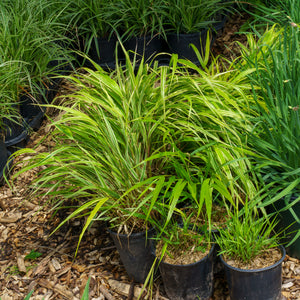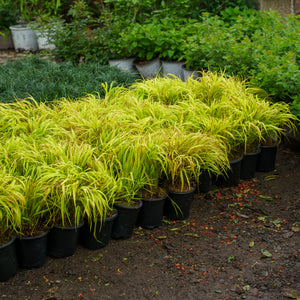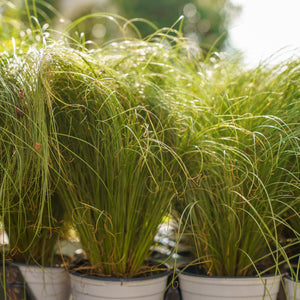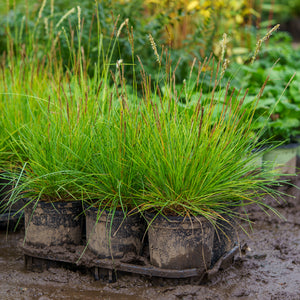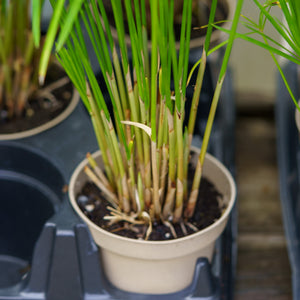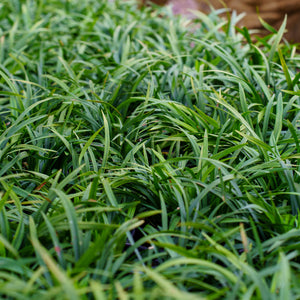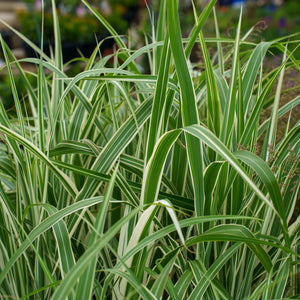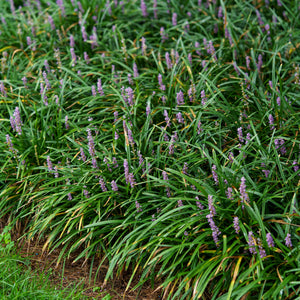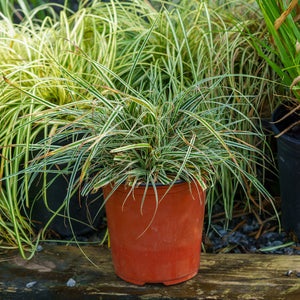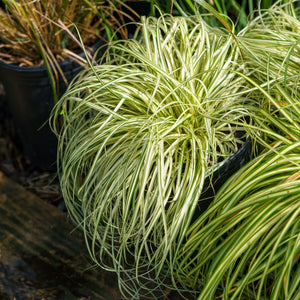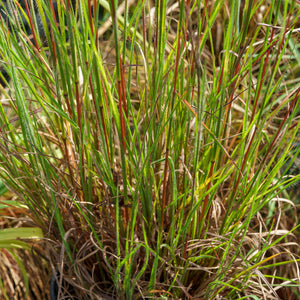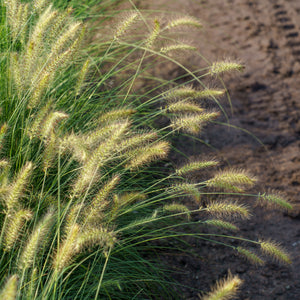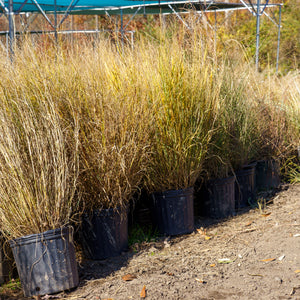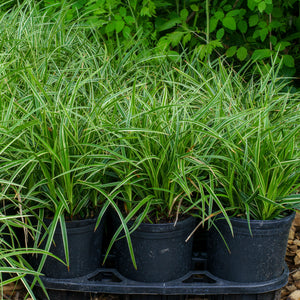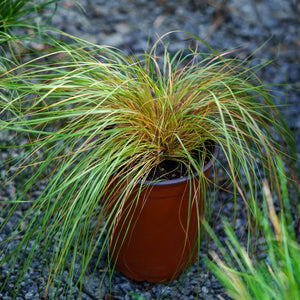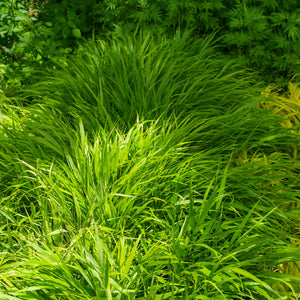The Grasses Guide
Grasses, with their graceful foliage and diverse forms, bring a touch of natural elegance and movement to any garden landscape. Known for their ability to thrive in a variety of conditions, grasses are perfect for adding texture and visual interest to borders, beds, and containers. Their airy plumes and swaying blades make them a favorite among gardeners of all levels. Whether you're seeking to create a modern minimalist garden or a lush, naturalistic meadow, grasses offer a versatile solution. With minimal maintenance requirements and adaptability to different soil types and light conditions, grasses are a hassle-free addition to any garden. Explore our Grasses Guide to learn more about cultivating and caring for these dynamic plants, and discover how to incorporate them into your garden for lasting beauty and enjoyment.
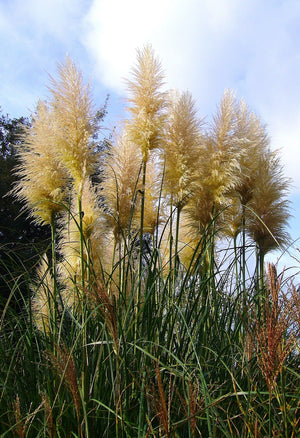
About
Grasses, encompassing a wide range of species within the Poaceae family, are known for their versatility, resilience, and graceful appearance. These plants are found in diverse habitats around the world, from prairies and savannas to wetlands and forests, showcasing their remarkable adaptability to different environmental conditions. Grasses are characterized by their slender leaves and unique flowering structures, which often produce feathery plumes or spikes that add a soft, flowing texture to garden landscapes.
Grasses play a crucial role in supporting local ecosystems, providing habitat and food for wildlife such as birds and insects. They also contribute to soil health and erosion control, making them an environmentally beneficial choice for various garden settings. With a wide range of sizes, from low-growing ground covers to towering ornamental varieties, grasses can be used to create visual interest, movement, and structure in garden designs.
In addition to their ornamental value, grasses are prized for their low-maintenance nature. They typically require minimal watering once established, thrive in poor soil conditions, and are generally resistant to pests and diseases. This makes them an ideal choice for gardeners seeking sustainable and easy-care plants that offer year-round appeal.
Explore the diverse world of grasses in our comprehensive guide, where you'll find insights into planting techniques, care practices, and creative uses for these versatile plants. Whether you're looking to add texture to borders, create a naturalistic meadow, or enhance the structure of your garden, grasses offer endless possibilities for enriching your outdoor space.
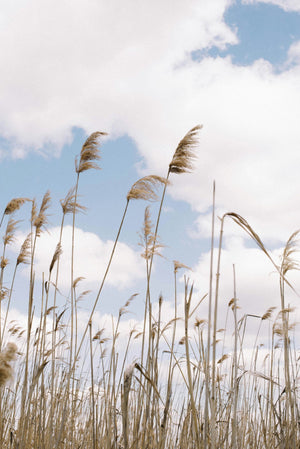
Planting
Grasses require specific planting conditions to ensure their successful establishment and flourishing growth. Here are some essential guidelines for planting and caring for grasses:
Soil: Grasses thrive in well-drained soil with a pH level ranging from 5.5 to 7.5. Prepare the planting site by loosening the soil to a depth of about 12 inches and incorporating organic matter such as compost or well-rotted manure. This improves soil structure and fertility, providing a healthy environment for root development.
Sunlight: Most grasses prefer full sun but can tolerate partial shade. Choose a location with at least six hours of direct sunlight per day for optimal growth and blooming. Some shade-tolerant varieties can thrive with less sunlight, so select species according to your garden’s light conditions.
Watering: Adequate watering is essential, especially during the initial growth stages. After planting, water the grasses deeply to ensure the roots receive sufficient moisture. Maintain consistent moisture levels, particularly during dry periods, but avoid waterlogging the soil.
Mulching: Apply a layer of organic mulch around the base of your grass plants to retain moisture, suppress weed growth, and regulate soil temperature. Use materials like wood chips, bark, or compost, ensuring the mulch is kept a few inches away from the plant stems to prevent moisture-related issues.
Spacing: Plant grasses according to their mature size, spacing them 12 to 36 inches apart, depending on the variety. Proper spacing ensures adequate air circulation and reduces the risk of fungal diseases.
Planting Time: The best time to plant grasses is in the spring or early fall when temperatures are moderate. This allows the plants to establish strong root systems before the onset of extreme weather conditions.
By following these planting and care instructions, you can ensure the successful establishment and thriving growth of your grasses. With proper attention, grasses will bring texture, movement, and year-round interest to your garden, enhancing its beauty and structure for years to come.
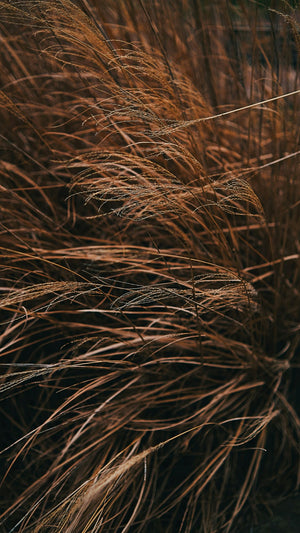
Care
Grasses require specific care to ensure their optimal growth and health. Here are some general guidelines for the care of grasses:
Watering: During the growing season, provide regular watering to your grasses, especially during dry spells. Aim to keep the soil consistently moist but not waterlogged. Water deeply at the base of the plant to encourage deep root growth. Once established, many grasses are drought-tolerant and require less frequent watering.
Pruning: Most ornamental grasses benefit from annual pruning to remove dead foliage and encourage new growth. Cut back the grasses to a few inches above the ground in late winter or early spring before new growth begins. This tidying up process helps rejuvenate the plants and maintain their attractive appearance.
Fertilizing: Grasses generally require minimal fertilization. Apply a balanced, slow-release fertilizer in early spring to support healthy growth. Avoid over-fertilizing, as this can lead to excessive foliage growth at the expense of flowering and overall plant health.
Soil and Sunlight: Ensure that grasses are planted in well-drained soil with a pH level suitable for the specific variety. While most grasses prefer full sun, some species can tolerate partial shade. Monitor the sunlight exposure and adjust the planting location if necessary to meet the needs of your grasses.
Mulching: Apply a layer of organic mulch around the base of your grasses to retain moisture, suppress weeds, and regulate soil temperature. Use materials like wood chips, bark, or compost, ensuring the mulch does not touch the plant stems directly to prevent rot and fungal issues.
Pests and Diseases: Grasses are generally resistant to pests and diseases. However, keep an eye out for common issues such as aphids, rust, or fungal infections. Inspect your plants regularly and treat any infestations promptly with appropriate organic or chemical controls.
Dividing: Many grasses benefit from occasional division to maintain their vigor and prevent overcrowding. Divide grasses every 3-5 years in early spring or late fall. Dig up the clump, separate it into smaller sections, and replant them at the same depth as the original plant.
By following these care guidelines, your grasses will thrive and add beauty to your garden for years to come. With their resilience, low maintenance requirements, and ecological benefits, grasses are a valuable addition to any landscape, providing texture, movement, and year-round interest.
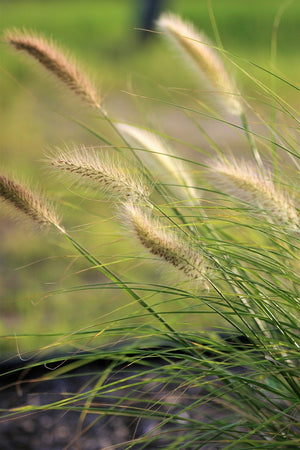
How To Use
Grasses offer versatility and can be utilized in various ways to enhance your landscape. Here are some recommendations based on their characteristics:
Colorful Borders: Use ornamental grasses to create dynamic borders in your garden. Plant them in clusters along pathways or garden beds to add texture, height, and movement. Mix different grass varieties to create visually appealing combinations that change with the seasons.
Pollinator Gardens: Grasses are excellent companions in pollinator gardens. Their flower spikes and feathery plumes attract beneficial insects like bees and butterflies. Plant them alongside flowering perennials to create a thriving ecosystem that supports local wildlife.
Privacy Screens: Tall grasses can serve as natural privacy screens or windbreaks. Use varieties like Miscanthus or Pampas grass to create living walls that provide shelter and privacy in your garden. Their swaying blades also add visual interest as they move in the breeze.
Erosion Control: Grasses with deep root systems, such as switchgrass or bluestem, are ideal for controlling erosion on slopes or hillsides. Plant them in areas prone to erosion to stabilize the soil and prevent runoff.
Containers: Many grasses are well-suited for container gardening. Use them in pots or planters to add height and texture to patios, balconies, or entryways. Combine grasses with other container plants for a mixed display. The gentle movement of grasses in the breeze adds a dynamic element to container arrangements.
Water Features: Plant grasses around ponds, streams, or water features to create a natural, serene landscape. Varieties like sedges and rushes thrive in moist conditions and complement the look of water elements. The movement of grasses enhances the calming effect of water.
Meadows and Prairies: Incorporate grasses into meadow or prairie plantings to create naturalistic landscapes. Mix native grasses with wildflowers to replicate the beauty of natural grasslands and support biodiversity. The gentle sway of grasses adds a sense of tranquility and natural beauty.
Ground Cover: Low-growing grasses can be used as ground cover to fill in bare spots in the garden. They help suppress weeds, retain soil moisture, and provide a lush green carpet. Their movement in the breeze adds a subtle, yet captivating visual interest.
Winter Interest: Many grasses offer winter interest with their persistent seed heads and foliage. Leave the grasses standing through the winter months to add texture and movement to the winter garden. The grasses' swaying blades provide visual interest even in the dormant season.
When incorporating grasses into your landscape, consider their growth habits, sunlight requirements, and soil preferences. By choosing the right placement and utilizing their versatile nature, grasses can enhance the beauty and functionality of your outdoor space, providing year-round interest, ecological benefits, and captivating movement in the breeze.
Conclusion
Grasses are a captivating and versatile addition to any garden landscape. With their graceful foliage, diverse forms, and the ability to sway elegantly in the breeze, these resilient plants bring a touch of natural elegance and movement to your outdoor space. Their ease of care and adaptability make them a favorite among gardeners of all levels. By adhering to proper planting and maintenance techniques, you can fully harness the potential of grasses to elevate your garden and make a lasting impact.
Whether you seek to create colorful borders, pollinator-friendly gardens, or natural privacy screens, grasses can fulfill a variety of roles in your landscape design. Plant them individually to highlight their unique textures and forms, or cluster them together for a striking visual display. Grasses' resilience and adaptability also make them ideal for container gardening, erosion control, and enhancing water features.
Beyond their ornamental value, grasses attract beneficial pollinators and contribute to the biodiversity of your garden ecosystem. Their low maintenance requirements and ecological benefits make them an excellent choice for sustainable gardening. With their enduring beauty, versatility, and ecological significance, grasses bring delight and natural allure to your outdoor environment, enriching your gardening experience and enhancing the overall beauty of your landscape.

